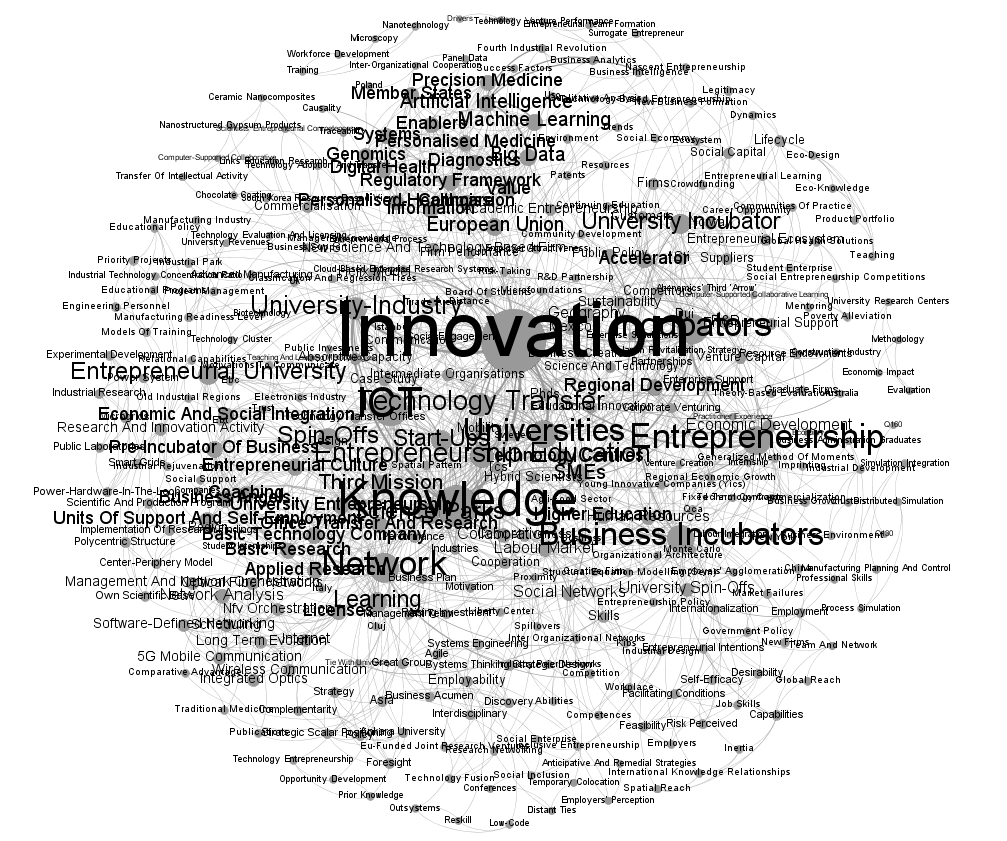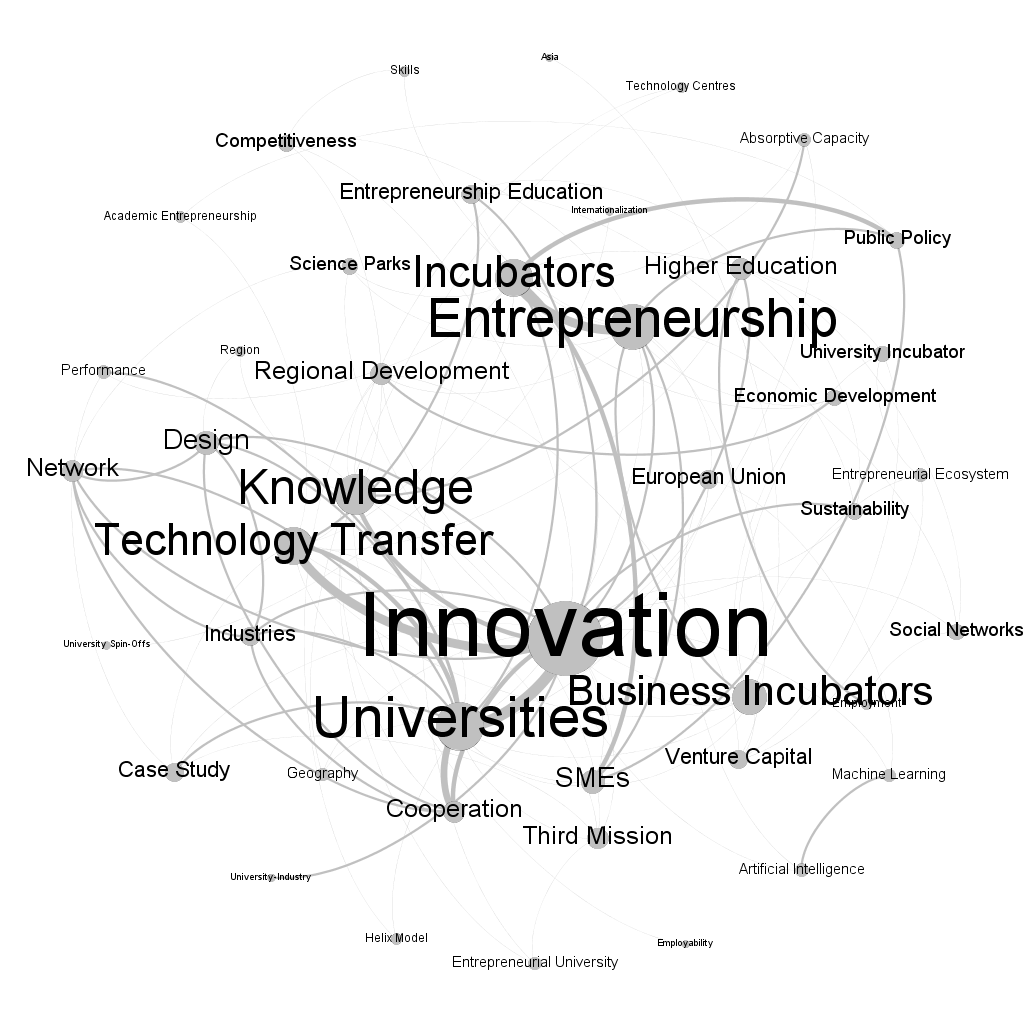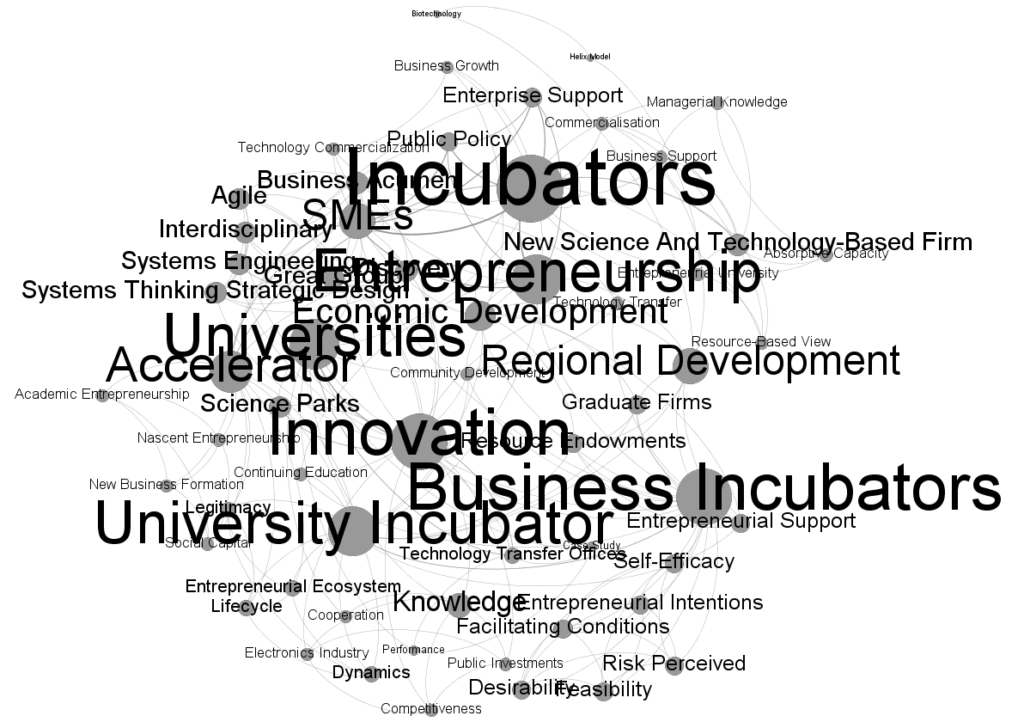
Dr Carolin Ioramashvili and Dr Pei-Yu Yuan discuss their WMREDI project looking at STEM Assets in the West Midlands, starting with a literature review in the area.
Basic research and development, often undertaken by universities is a vital ingredient in the innovation process. Businesses and other organisations rely on scientific insights to develop and improve new products, services and production processes. However, the path from scientific discovery to market is often a bumpy one, not least because universities and businesses can operate in vastly different environments, speak different languages, and have few points for interaction. This gulf is sometimes called the “valley of death” for innovation.
As part of WMREDI’s theme 3 on regional innovation ecosystems, we are investigating what we call “STEM assets” – organisations that help bridge this metaphorical valley and bring scientists and industry closer together. We define STEM assets as physical facilities dedicated largely to the translation, development and transfer of scientific, technological or engineering innovation, knowledge and expertise which relates to new or improved business processes, products or services. This could include, for example, research labs, science parks, or business incubators. The goal of the project is to understand how STEM assets create impact and to dive into the underlying mechanisms.
As a starting point, we surveyed the existing literature to understand what is already known in this field. We conducted a systematic review, whereby the list of articles to be included was reduced through successive rounds of screening. Eventually, 30 articles were included for detailed review.
Method – co-word analysis
This systematic review, coupled with keyword analysis, intended to present quantitative and qualitative knowledge on the emerging subject of STEM assets. This study followed a rigorous systematic process to select 109 articles published in peer-reviewed journals from 2010 to July 2021. Keyword analysis was subsequently performed with the Bibexcel software to explore the most prevalent themes in the current literature of STEM assets.
We adopted keyword analysis because many prior studies have employed this technique to explore the development of knowledge in a scientific field, to map it, and to trace its intellectual structure. The keywords were selected by the authors to represent the themes of research articles. A research article usually contains several keywords and these keywords listed in a paper signify the gaps or linkages among subjects in a research field. The co-occurrence patterns of keywords specify the relationship between ideas within the subject areas presented in such texts. Co-occurrence keyword analysis (also known as co-word analysis) is one of the general techniques in information science for showing the evolution of socio-cognitive structures from a set of documents.
Results – 109 papers
A total of 345 keywords were identified in 109 research articles. The following table shows the top ten keywords in extant STEM-related research from 2010 to July 2021. Among the top ten keywords, the dominant themes are innovation and subject areas that are closely related to innovation such as knowledge, incubators, and University-Industry.
Table 1 Top keywords of STEM literature based on the occurrence.
| Keyword | Frequency |
| Innovation | 40 |
| Knowledge | 21 |
| Incubators | 14 |
| University-Industry | 14 |
| Entrepreneurship | 13 |
| Universities | 13 |
| Business Incubators | 11 |
| Network | 9 |
| SMEs | 9 |
| Technology Transfer | 9 |
The following figure shows the network of all the 345 keywords (The network was generated using Gephi). The graph visualisation helps us to explore the relationship between keywords and identify the most popular topics in the current literature. A larger bubble (also the font size) indicates that the word was mentioned in several studies. At first glance, innovation is the most popular research topic in STEM asset studies and innovation is often mentioned together with knowledge, universities, entrepreneurship and incubators.

To make the generated network more readable, we then confine the network to only show the keywords with at least two occurrences. Similar to the above figure, a larger bubble size indicates that the word was used more frequently. The thicker the line between two words, the higher co-occurrence of the two words, which implies the two words were more connected.

The following table shows the top 10 pairs of keywords with the highest co-occurrence.
Table 2: Top pairs of keywords of STEM literature based on the co-occurrence
| Word 1 | Word 2 | Co-occurrence |
| Innovation | Universities | 6 |
| Entrepreneurship | Incubators | 5 |
| Innovation | Technology Transfer | 5 |
| Cooperation | Universities | 4 |
| Cooperation | Innovation | 3 |
| Incubators | Public Policy | 3 |
| Incubators | SMEs | 3 |
| Innovation | Knowledge | 3 |
| Technology Transfer | Universities | 3 |
| Absorptive Capacity | Knowledge | 2 |
It is clear from Figure 2 that the main theme is ‘Innovation’ in the STEM literature and the key players are ‘Universities’, ‘Entrepreneurship’, and ‘Incubators’, and the activities taking place on the subjects are ‘knowledge’ and ‘technology transfer’. From the above table, we can see that the most frequent co-occurrence keywords are ‘Innovation-Universities’ (6), ‘Innovation-Technology transfer’ (5), ‘Entrepreneurship-Incubators’ (5) and ‘Universities-Cooperation (4). ‘Innovation’ is most often studied together with ‘Universities’, as well as ‘Technology Transfer’ and ‘Cooperation’, while ‘Entrepreneurship’ is most often linked together with ‘Incubators’. Moreover, there are only a few direct links between ‘Innovation – Entrepreneurship’ or between ‘Innovation – Incubators’.
In the network, there are three clusters. The first cluster has studies on ‘Innovation’, ‘Universities’ and ‘Business incubators’, the second cluster focusses more on ‘Entrepreneurship’ and ‘Incubators’, and in between there is a cluster about ‘Knowledge’ and ‘Technology Transfer’. It seems that incubators could be the intermediary bridging the knowledge gap between university and industry.
Results – Accept papers
In the next section, we performed a similar network analysis on the 30 articles that have been accepted for detailed review. 25 of them can be found in the Web of Science core collection and a total of 88 keywords were identified. As shown in Figure 3 the structure is similar to what we observed in Figure 2. The primary theme is still innovation, but the key players of interest slightly shift to various kinds of incubators. The elimination of papers less relevant to the review has resulted in a denser cluster of core themes at the heart of the study.

This blog was written by Dr Carolin Ioramashvili and Dr Pei-Yu Yuan, City-REDI / WMREDI, University of Birmingham.
Disclaimer:
The views expressed in this analysis post are those of the authors and not necessarily those of City-REDI / WMREDI or the University of Birmingham.
